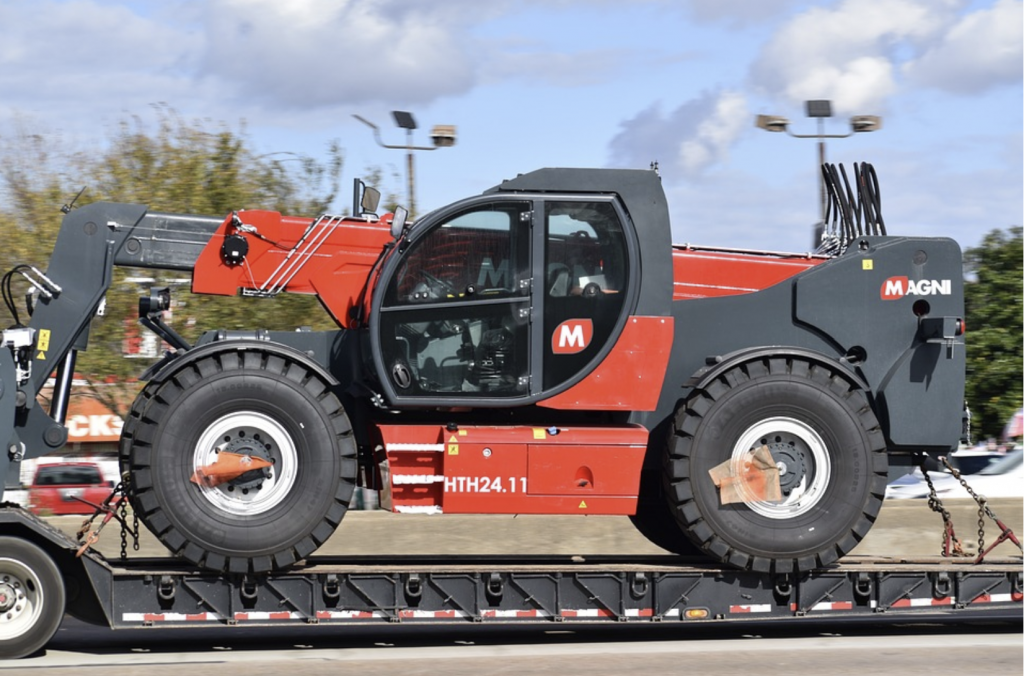Business
China Challenges the Currency System, World Needs Alternatives
By calling the currently dominated currency system by US as “the product of the past.” Chinese president Hu Jintao called for a change in its system by replacing US dollars with Yuan, its own currency.
Mr Hu also criticized the decision by the US Federal Reserve to inject $600bn into the economy, which some argue will weaken the dollar at the expense of other countries’ exports. “The monetary policy of the United States has a major impact on global liquidity and capital flows and therefore, the liquidity of the US dollar should be kept at a reasonable and stable level,” said President Hu, as quoted by the BBC.
A global currency is the currency in which vast or major amount of trade/transaction takes place, presently most of the countries trade on the basis of US Dollar, but after the global economic crisis of 2009 China and Russia called for an urgent revision of international currency system and supported the consideration of a global currency.
Till date Spanish Dollar (17th – 19th century), Gold (19th to World War I) and US dollar (20th century) had been used as international currency and now US dollar and Euro serves the same.
On March 2009, Russia had called for a supranational reserve currency as part of a reform of the global financial system, which supports diversification of the list of currencies used as reserve ones. Whereas in the same month, President of People’s bank of China called for the creative reform of the existing international monetary system towards an international reserve currency,” as it would significantly reduce the risks of a future crisis and enhance crisis management capability.
Money always adds to the power, but today’s wars are literally fought with money. A powerful economy can manipulate its currency to gain the most from international export trade. US blames China of manipulating Yuan, and rest of the world blames US of adopting selfish policies which makes US dollar strong at the expense of other economies of the world.
Business
What are EDC products, and why should you always have them?

EDC gear includes products that have become indispensable for improving one’s quality of life. These are the tools and implements that can solve everything from simple daily tasks to being vital objects capable of saving lives.
Regardless of the lifestyle you lead, there are countless situations in daily life where you need a tool or item that helps resolve inconveniences or facilitates completing tasks. This is where the category of products known as EDC (Every Day Carry) comes into play. EDC includes a variety of items that are necessary in unexpected moments.
For these tools to truly be useful in daily life, they must be durable and of high quality. For this reason, it is highly recommended to choose selected EDC gear by Onibai.com, an Italian brand with extensive experience in selling this kind of exclusive everyday carry equipment. The brand offers a wide selection of well-crafted, durable products that meet the demands of everyday carry needs.
Knives: essential for multiple situations
Knives, or EDC blades, are among the most essential tools in any EDC kit. In fact, they are often seen as a symbol of someone who is prepared, practical, and functional. Whether it’s opening packages or envelopes, cutting cords or ropes, or other simple daily tasks, a suitable knife can make these activities much easier. Additionally, a good knife can serve as a means of self-defence in case of sudden attacks.
Over time, the design of knives has evolved and diversified. Daily-use knives are now specifically designed for lighter cutting tasks, such as those mentioned earlier. Tactical knives, on the other hand, are made for more intense scenarios. They are stronger and reinforced, often designed for high resistance or self-defence situations.
Urban knives, tailored for city dwellers, are built to meet the needs of individuals in modern environments, so they often feature sleek finishes that complement contemporary lifestyles. Another popular category is multi-tool knives, which are designed to handle a variety of tasks. These knives have the resilience and sturdiness of a 3-inch blade while also fulfilling the precision requirements needed for various EDC tasks.
Other essential EDC products
In addition to knives, there is a wide range of other EDC products that are indispensable in daily life. One of these is, undoubtedly, a reliable wallet. A well-designed wallet needs to be robust enough to withstand daily use while keeping essential items like bank cards, identification documents, and more, safe and in good condition.
Flashlights are also vital components of any EDC kit. These tools are incredibly useful in many situations, particularly in dark environments or emergencies where additional lighting is critical. When selecting a torch, factors such as battery life, size, portability, and brightness should all be taken into account.
Purses, fanny packs, or backpacks also play an essential role in everyday carry. These items are where people store the various EDC products described above. They usually come with several compartments and are available in different sizes and materials, depending on the person’s style and daily activities.
Other items that are part of an EDC kit include beads and cords, Velcro patches, bottle openers, multi-functional key organisers, as well as durable, long-lasting, and stylish pens that adapt to any situation and lifestyle.
An interesting category of EDC products includes stress-relief toys for adults, which provide a means of alleviating daily stress. Popular options in this category include fidget spinners, fidget sticks, stress-relief sliders, poker chips with buttons, and mechanical coins. These items not only serve as a source of relaxation but can also be a fun and effective way to manage anxiety and tension during the course of a busy day.
In conclusion, EDC gear is not just a set of tools but a lifestyle that reflects preparedness, practicality, and a proactive approach to the uncertainties of everyday life. The more equipped you are, the more empowered you will feel in facing the challenges that arise.
Business
The importance of telescopic handlers: innovation and efficiency in load handling
In the field of logistics, efficiency and safety are key aspects for the success of any project. Machines and tools must handle heavy loads and perform complex tasks with precision. In this sense, Magni TH telescopic handlers are the perfect option.

Telescopic handlers are lifting equipment that combine the capabilities of a crane and a forklift, featuring a telescopic arm that can extend and retract to reach considerable heights and access areas that may be difficult to reach manually. Thanks to this versatility, they become essential tools for a wide range of applications, indispensable in multiple sectors.
Today, the telescopic handler industry is constantly evolving, with technological innovations that enhance their functionality. One of the leading companies in this field is Magni TH, renowned for offering high-quality, efficient machinery with a focus on innovation and sustainability. This ensures that their telescopic handlers not only meet current demands but are also prepared for future challenges.
What does Magni TH offer?
Magni TH stands out in the market by offering a wide range of telescopic handlers that adapt to a long list of specific needs. Among their most notable models are fixed telescopic handlers (TH), rotating telescopic handlers (RTH), and heavy-duty telescopic handlers (HTH). They also offer aerial platforms, ranging from fixed models to articulated and rotating versions.
Furthermore, Magni TH machinery is widely recognised for its high-quality standards, due in large part to the selection of top-class raw materials. This attention to detail not only ensures compliance with market safety standards but exceeds them, guaranteeing that every machine is 100% reliable and durable.
Magni TH’s manufacturing process is another aspect that sets them apart. The company combines advanced industrial techniques with a craftsmanship approach, allowing for continuous innovation and enabling them to remain at the forefront of the market. This combined approach not only improves production efficiency but also allows for greater customisation.
In addition to their impressive product line, Magni TH is committed to providing proper advice and training to its customers. The company offers detailed descriptions of its products and services, ensuring that customers fully understand the capabilities and strengths of each machine model.
Magni TH also stands out for its focus on sustainability, reflected in the energy efficiency of each of their machines. This not only maximises user productivity but also ensures environmental responsibility at all times.
Innovation and safety
The use of innovative, high-quality telescopic handlers, like those manufactured by Magni TH, is essential for significantly improving operational efficiency across various sectors. These machines, thanks to their precision and speed in executing complex tasks, help reduce the time needed to complete projects, thereby increasing the overall productivity of companies.
On the other hand, safety is another key aspect when using high-quality telescopic handlers. These machines are equipped with advanced safety systems, such as stabilisers, enclosed cabins to protect operators, and load control systems, ensuring operations are carried out efficiently and reliably. Moreover, their ability to handle loads with precision and care is crucial for ensuring the integrity of products, significantly reducing the risk of damage during transport and handling. This is particularly important in sectors where product integrity is critical to maintaining high-quality standards.
At the same time, the use of innovative telescopic handlers can also enhance a company’s competitiveness. Investing in high-quality equipment allows them to provide services with greater efficiency and safety, helping them stand out in the market. Ultimately, investing in this type of telescopic handler can be considered a strategic decision that can have positive long-term impacts on the sustainability and growth of a company, as adopting advanced technologies demonstrates a commitment to excellence and proactivity, keeping companies at the forefront and allowing them to adapt easily to the many changes in the market.
Versatile Applications of Magni TH
Magni TH telescopic handlers are known for their versatility and ability to adapt to a wide range of applications. Unlike other companies that focus on specific sectors, Magni TH offers its products to any industry that requires load handling solutions. For example, in the agricultural sector, Magni TH telescopic handlers are key tools for tasks such as handling hay bales, transporting fertilisers, and loading livestock. Additionally, their ability to navigate uneven terrain and lift large volumes of material are essential advantages on farms and agricultural operations.
Likewise, the maritime sector benefits greatly from the versatility of Magni TH telescopic handlers. These machines are ideal for storage and cargo handling on vessels and ports, as well as for small routine maintenance operations.
In construction, Magni TH telescopic handlers are one of the most widely used tools, enabling the lifting and positioning of heavy materials such as bricks, cement, and beams. Regardless of the size of the construction project, their ability to operate on difficult terrain and reach high altitudes makes them ideal for any occasion, improving productivity and minimising the risk of accidents.
Finally, telescopic handlers are also widely useful in the industrial and mining sectors. In industry, these machines are employed for material handling in factories and warehouses, while in mining, their robustness, and load capacity make them a perfect option for working in extreme conditions.
Business
ServiceNow Development Consultancy: Business Process Automation as Disruptive Technology

In the age of AI and Machine Learning, automating business processes has become a must for any business that wants to remain competitive in their industry. Business process automation consists of setting up any process to be completed mostly by any existing technology with minimal manual input from human employees. For organizations seeking to optimize their workflows, engaging with a specialized ServiceNow implementation consultancy can be a game-changer, offering tailored solutions to streamline operations.
Examples include implementing an inventory management system so both you and your customers have access to accurate data on what products are available, sending out confirmation emails after purchase, having sales reports automatically generated through a CRM platform, social media posting schedules, and most email marketing tasks.
There are many reasons why business leaders have been turning to tech to improve their companies in recent years. The benefits of business process automation far outweigh the costs. These benefits range from increased efficiency, cost savings, scalability, and improved accuracy, to enhanced customer experience. Automating tasks in areas such as HR helps with employee onboarding and retention, and automation in all areas saves time when it comes to drafting reports and communicating with leads.
Marketing automation is responsible for a 14.5% boost in sales and a 12.2% decrease in marketing expenses (source: Nucleus Research). When employed in HR processes, business automation has shown that automation processes, when applied to onboarding, increase new hire retention by 16% (source: LinkedIn).
As is the case with any disruptive technology, business automation also poses risks, especially for more vulnerable sectors. It is estimated that by 2030, 47% of jobs in the United States are at risk of being displaced by automation (source: Science Direct). In the United States, workers aged 16 to 24 are the most exposed to the risk of automation, as 49% of these workers could have their jobs displaced by automation processes (Brookings).
Various government and company policies can be put in place to provide upskilling and reskilling for these workers to minimize the risk business process automation poses to some members of the workforce. However, it is clear that business process automation is here to stay.
Other concerns brought up by automation include data privacy and protection and copyright issues. Because automation involves storing confidential data in the cloud, businesses are concerned about security breaches by competitors or, worse, malicious users wishing to scam their current clients. Business leaders are paying more attention to cloud infrastructure services to minimize these risks.
Cloud infrastructure security can protect your business’ data through advanced encryption. Regular audits and compliance are automated but still supervised by human employees to ensure security has not been compromised. Data segmentation and isolation can also ensure your company’s data is not easy to access, even if there has been a breach.
On the other hand, some processes involving AI can end up infringing copyright laws in various industries. This can lead to large expenses in legal fees if AI is not used mindfully by departments, without mentioning the PR risks of your company accidentally employing someone else’s copyrighted content.
In conclusion, business process automation is a process including a wide array of existing technologies (AI, ML, etc.). Through business automation, business sectors start to delegate tasks to technological solutions.
As a result of automating tasks, there is proof of increased proficiency and accuracy, enhanced customer experience, and saved costs. However, there is also resistance from some sectors of society, as automation can result in job displacement for some existing members of the workforce.
To mitigate this, business leaders can emphasize the fact that they are automating processes while still making an effort to retain skilled workers. Upskilling and reskilling can help businesses retain employees whose jobs have become obsolete. Many governments are also expected to step up with a series of policies to protect the interests of these workers.
-

 Business10 months ago
Business10 months agoLearn English quickly and effectively with the Callan Method
-

 Sports11 months ago
Sports11 months agoA-Champs Reaction Training Lights: Your Path to Soccer Excellence
-

 Travel10 months ago
Travel10 months agoDiscover the finest tours across Morocco: an adventure oasis
-
Travel11 months ago
Discovering Valencia and the Valencian Community: an unforgettable holiday experience
-

 Sports10 months ago
Sports10 months agoBody Armor Plates – Essential Considerations for Selecting the Right Protection
-

 Travel8 months ago
Travel8 months agoImmerse Yourself in Nature: Explore Forest Bathing with a New Guidebook
-

 Europe8 months ago
Europe8 months agoBarcelona and Athens: cities that will leave an everlasting impression
-

 Sports10 months ago
Sports10 months agoElevate Your Game: Unlocking the Power of A-Champs Reaction Training Lights in Soccer Training







